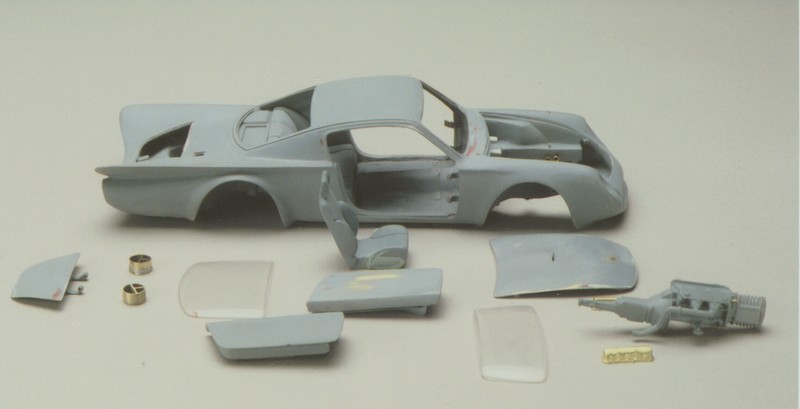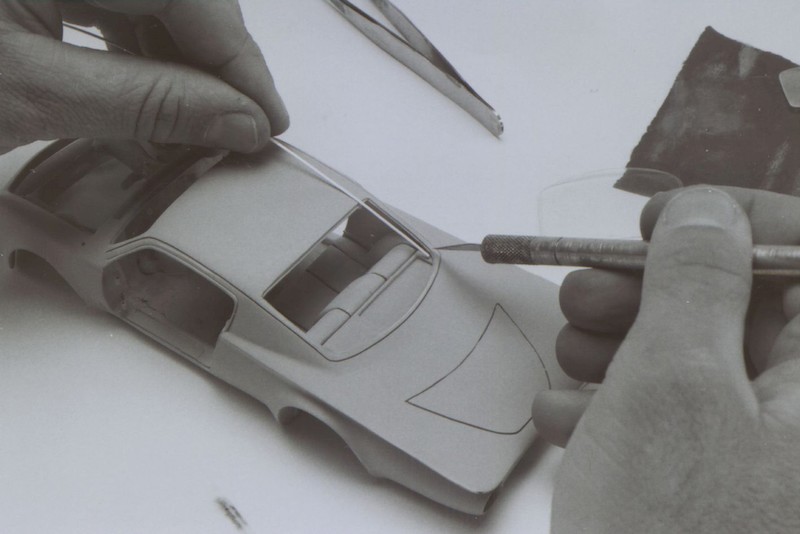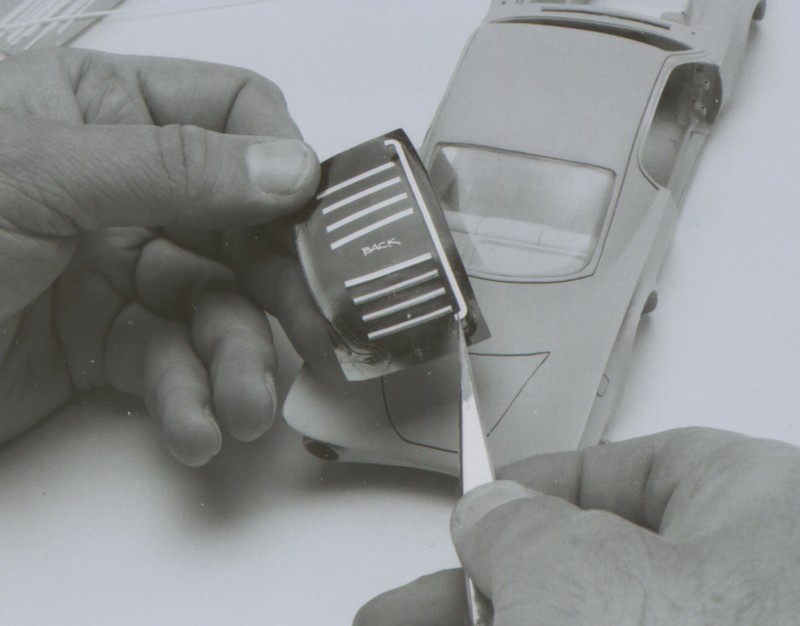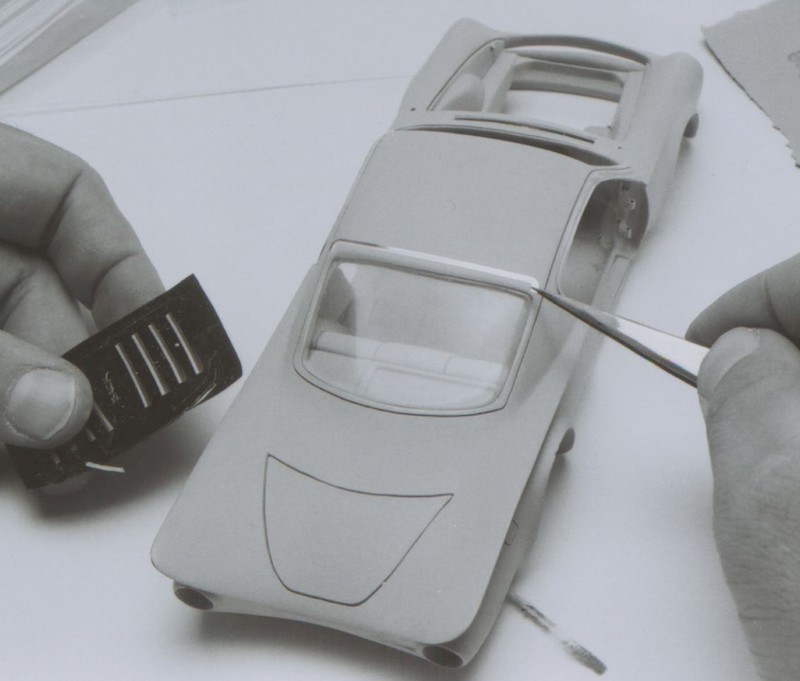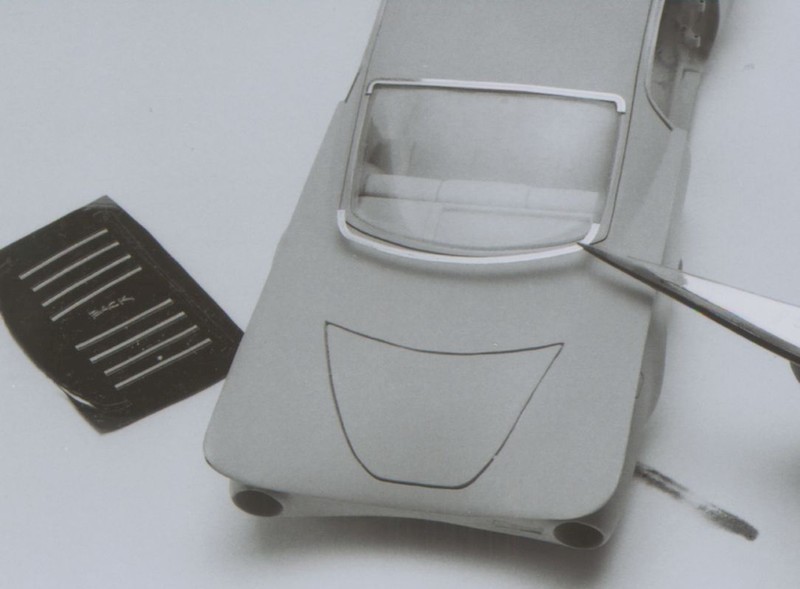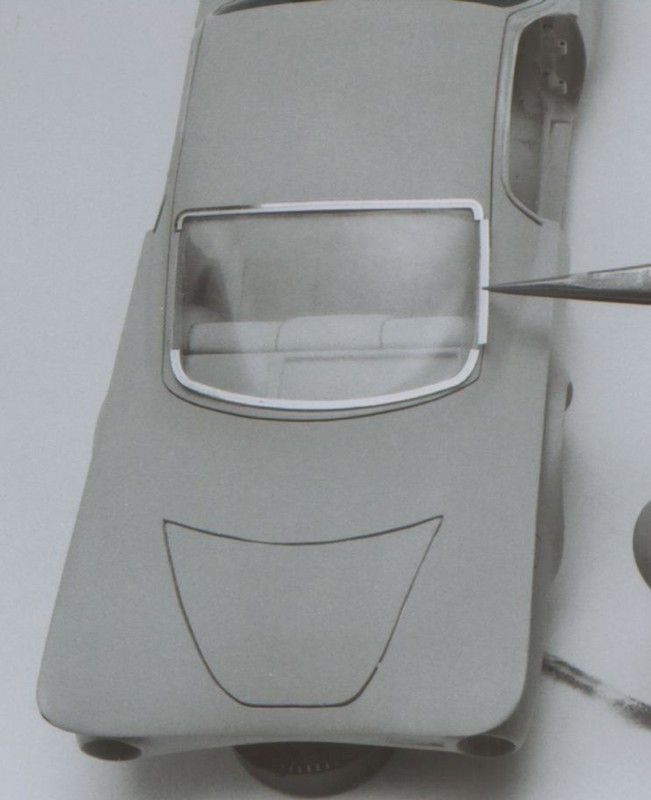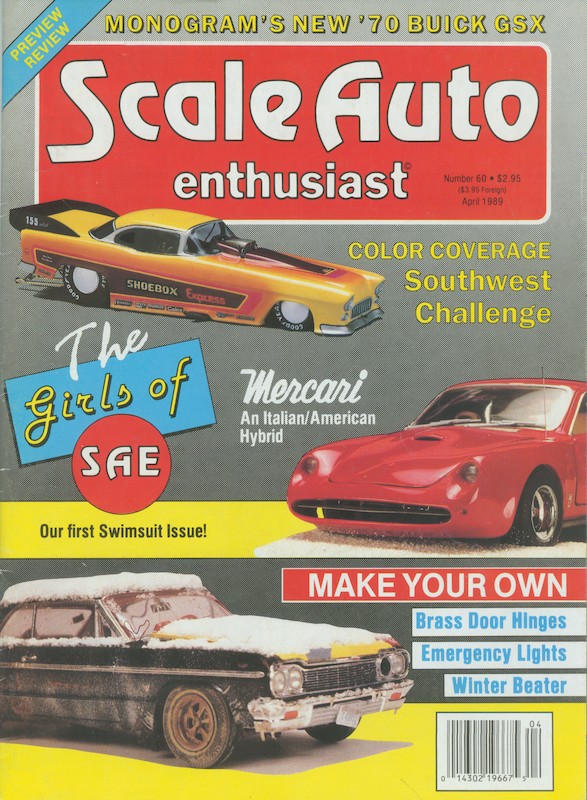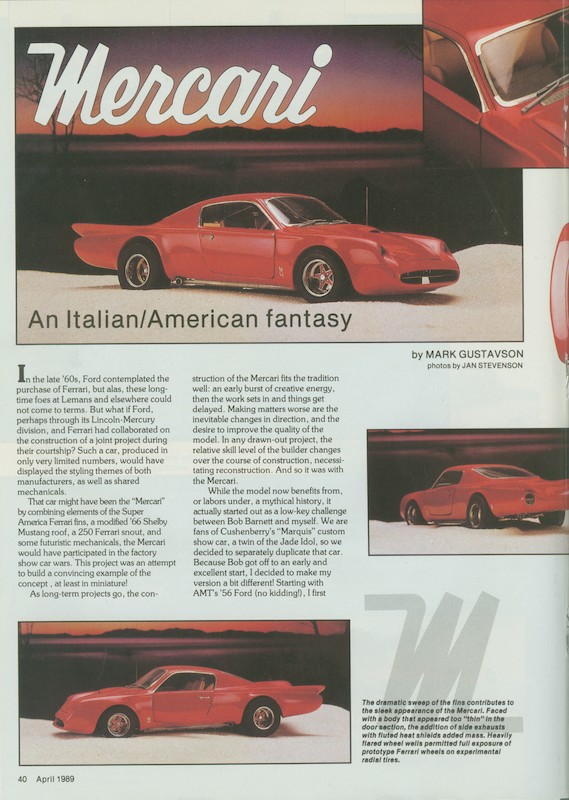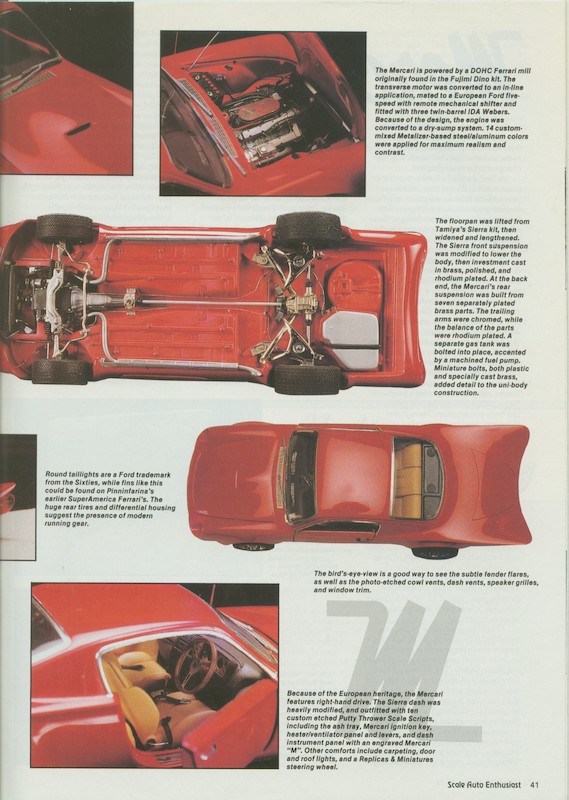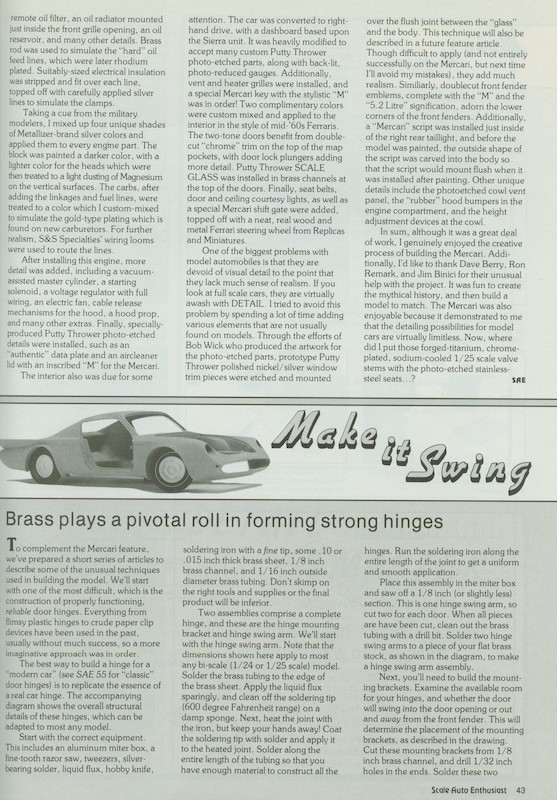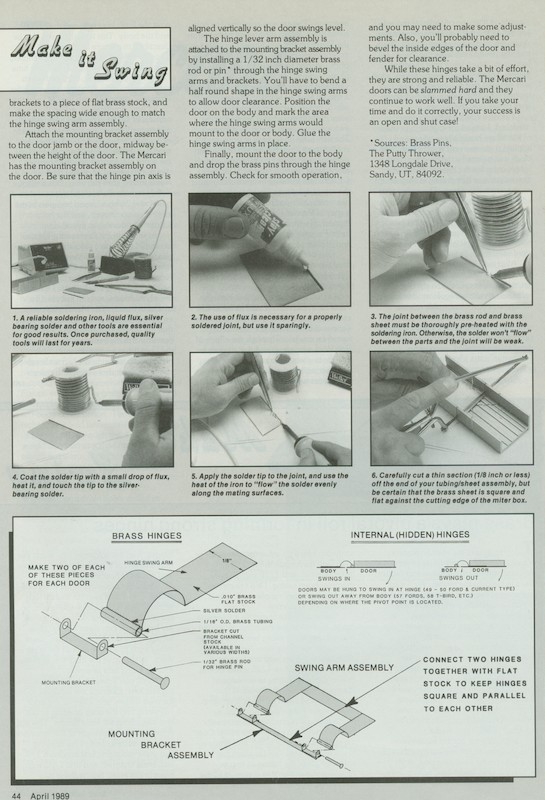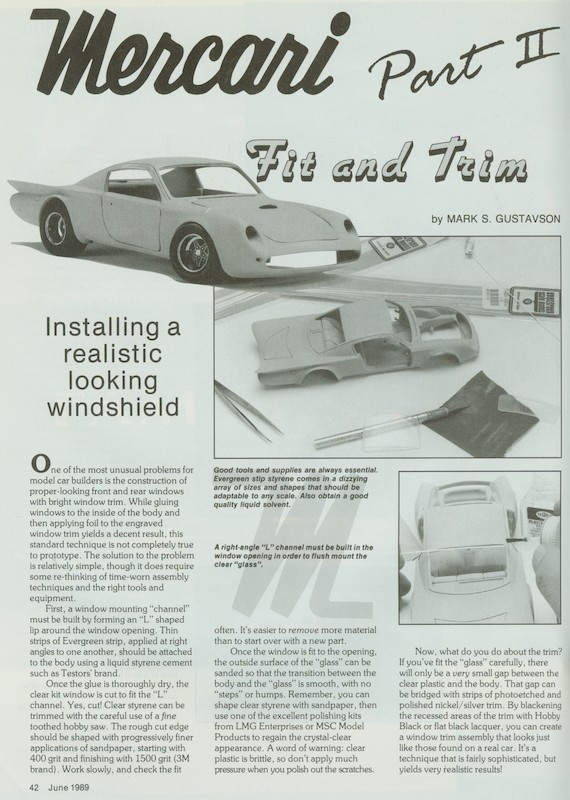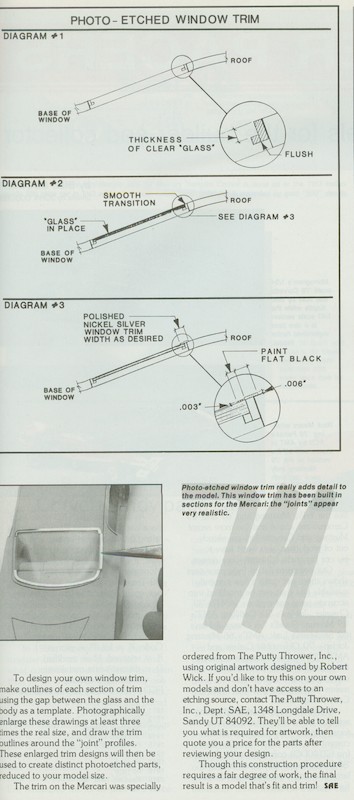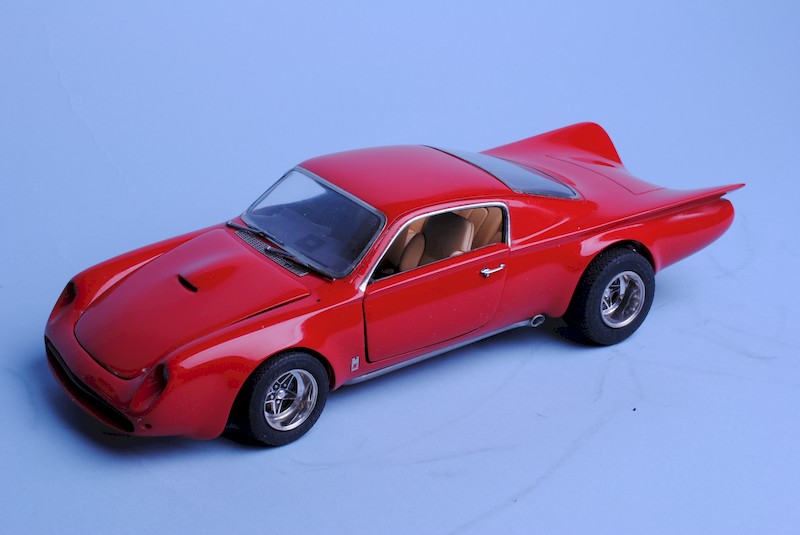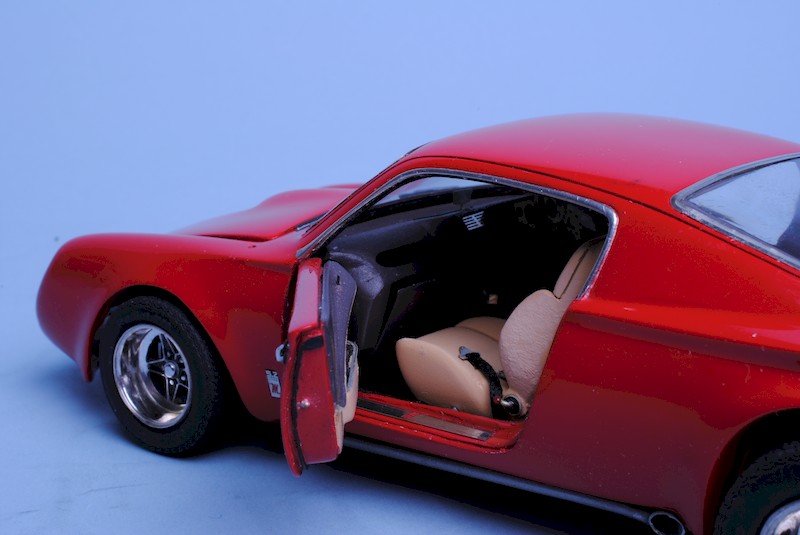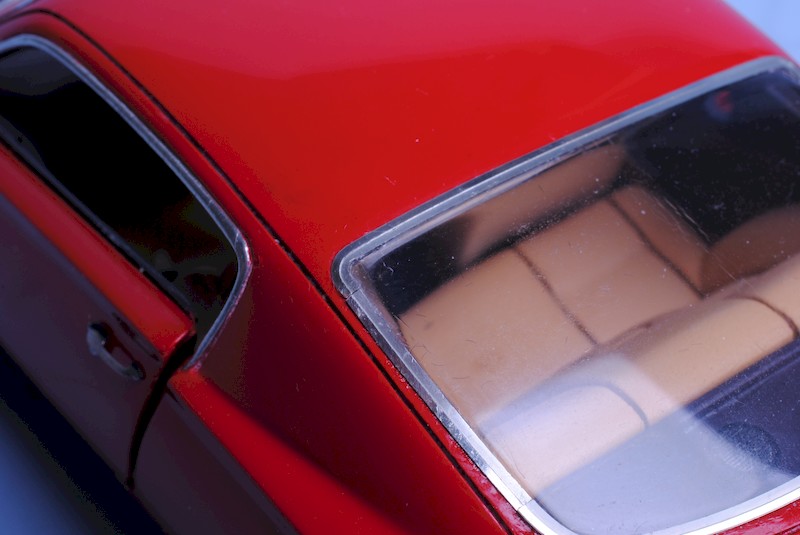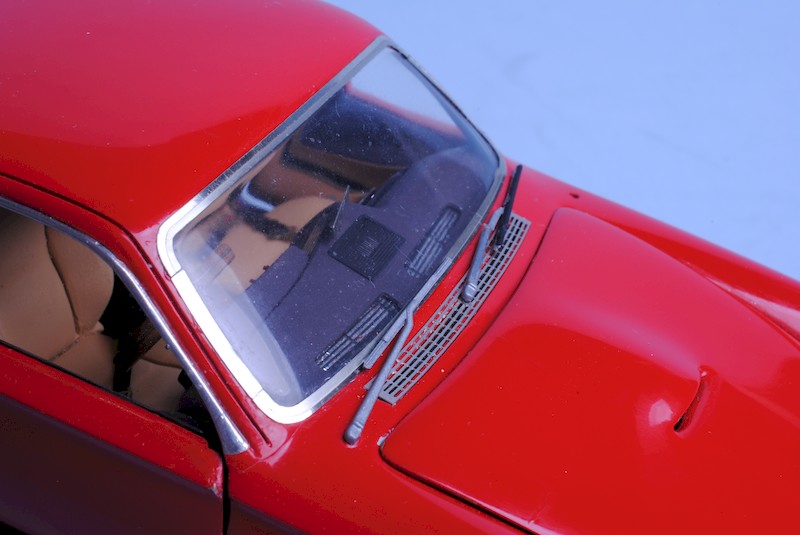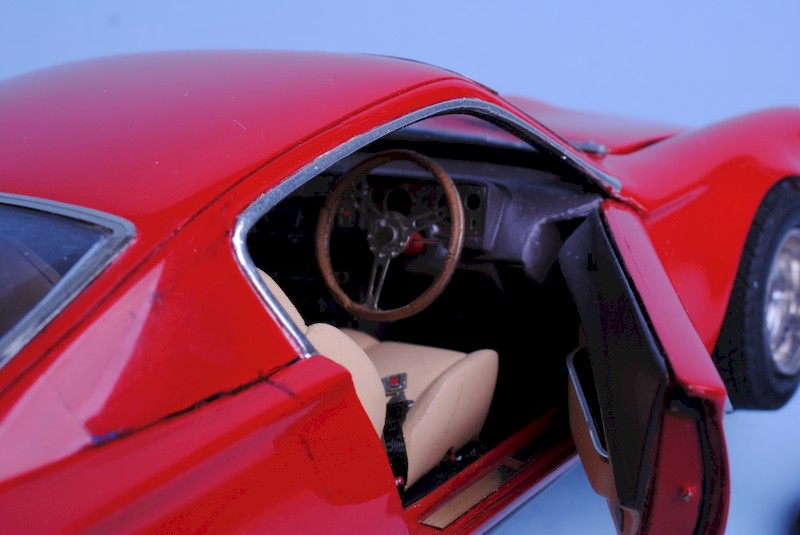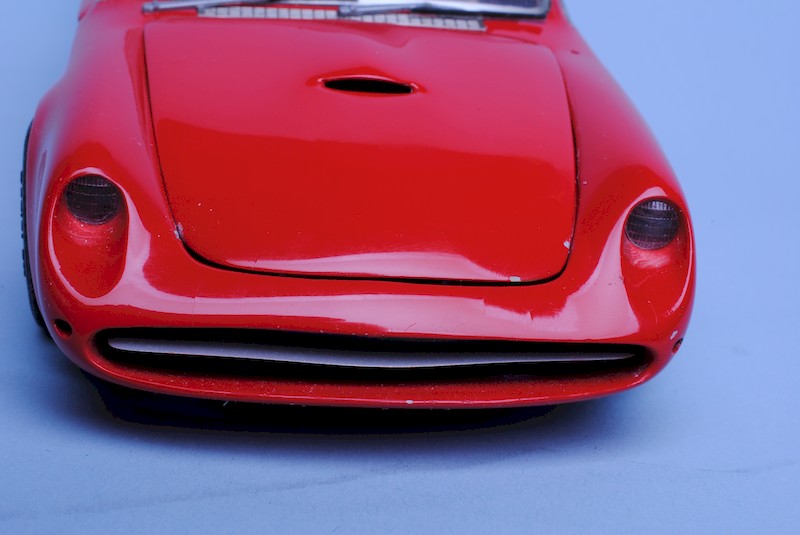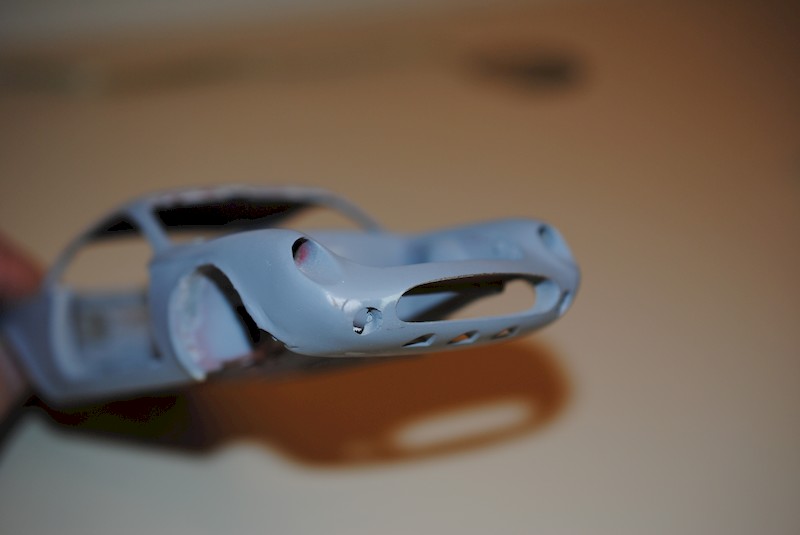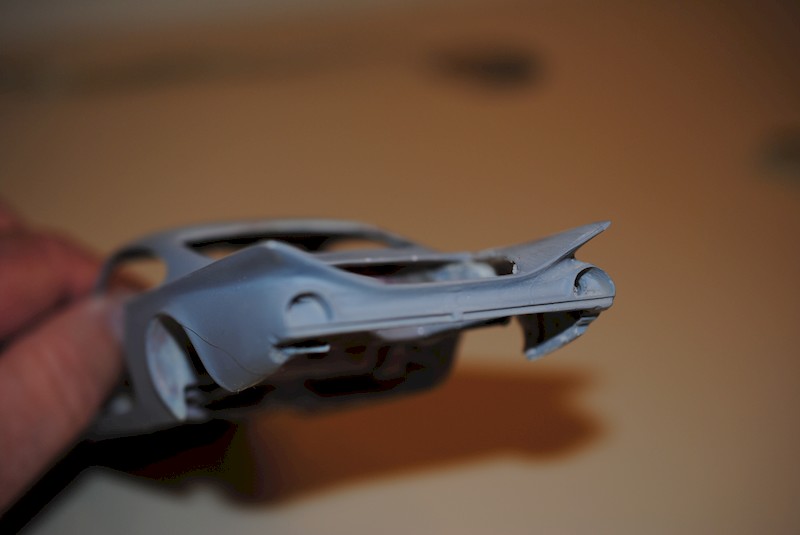The Mercari
In the late Eighties, I decided that I wanted to build a fantasy styling study triggered by the failed early Sixties effort by Ford to buy Ferrari. In a moment of speculation, I designed a model – a Mercury/Ferrari styling hybrid – that featured a Ferrari engine, finned styling (Ferrari built finned “Super America” cars in the late Fifties), and a prototype Ford unibody/suspension mechanical elements and, of course, bright Ferrari red paint!
I decided to build this model with the body mated to the unibody platform which required me to assemble the models through the doors – essentially like a 1:1 car would be built. Though difficult to do, this permitted me to control the dimensional variables (e.g., how the doors fit, if hinged) which is not possible if typical kit assembly procedures are used.
This model was featured in a major article in Scale Auto followed by a couple of “how-to” articles. The model also won Best Automobile at the 1996 IPMS Nationals and it scored well at a lot of regional contests around the United States, routinely winning “Best Engine.”
Unfortunately, the model was very badly damaged in 2012 when, as I took a bad fall in my shop, I dropped the model. The damage was so significant that I took it apart and I’ve repaired the body. I’ve also corrected a few problems on the original model, and I’ve restyled it a bit (reshaped the doors, added a few Ferrari 250-esque styling cues on the front clip, and shortened the too-long rear quarter panels aft of the center line of the rear axle). The model will be painted the same bright solid red color and will feature the same wheels, V6 Ferrari engine and a fresh set of photoetched parts as found on the first version on the model). Mercari II will be back!
In the meantime, check out these photos of the original model (“Mercari I”) and look over the magazine feature of the model.
The unfinished model featured a wide array of parts. In this image of the model mid-point in construction, you can check out the two brass doors/trunk/hood (all hammered from .020 brass), the scratchbuilt round/multi-lens taillights and the first powerplant – a crank-blown V6 (which, fortunately, was replaced with a Ferrari Dino engine).
The polished windshield and back light had to sit flush with the exterior body panels rather than being installed from inside the body. Therefore, an L-shaped ledge was created by gluing some strip styrene around the window opening at a depth one-half the thickness of the opening, assuming that the “glass” would be no more thicker than the remaining half.
On aspect of the photoetched parts (for which Bob Wick did the art) were double-cut polished nickel window trim, rendered in multi-pieces. These pieces matched the interface between the polished plastic windows (that sat in an L-shaped ledge that I created with strip styrene) and the body work. These parts, cut by Fred Hultberg (Fotocut), were hosted on a rubber-like backing.
With the glass temporarily sitting in the body, the multi-piece trim was test-fitted to the model. The longest piece went across the leading edge of the backlight. Ultimately, it was a mistake to make the window trim in multiple-parts: it didn’t look realistic when placed, and it was devilishly difficult to install.
The bottom trim was also test fit – note how the top and bottom pieces curve around the opening meaning . . .
. . . that short pieces fit on the left and right sides. After painting, the photoetched moldings were installed with Krystal Kleer.
When finished, the model was treated to a great feature article in the April 1989 issue of Scale Auto Enthusiast including this tantalizing cover shot. Thanks, Gary!
There was a lot to like (and some things to critique!) about the styling and detailing of this model. The front clip was clearly inspired by early Fifties Ferrari styling, but the long rear quarter panel was a bad design. The roof was lifted from a 1965 Mustang Fastback! My thanks to Jan Stevenson for the great photos.
The Dino Ferrari engine was probably the best detailed part of the model, and garnered the model a lot of Best Engine awards at major contests. The suspension, derived from the Ford Sierra kit, was cast in brass, polished and then cobalt-plated. The front suspension was the “positive” lead for the working lights, with the front suspension completing the circuit. Note that there we no mufflers! What was I thinking? The interior featured a lot of custom photoetched parts, including a great steering wheel kit from Norm Veber.
The hood featured a hood scoop reminiscent of the one on the ‘57 T-bird, and opened forward in typical Ford fashion from the Fifties. Check out how good the rear window trim looked (it took about 2 hours to install the trim!).
The feature article included a how-to feature on how to make brass hinges. Based upon a George Layton design, I developed his idea a bit and used it on this model. Until the model was badly damaged, the hinges worked without a problem for nearly 24 years!
Another article discussed how to create the window installment procedure I’d developed along with how to create and use special photoetched trim.
In a lot of ways, the Mercari styling was almost, well, too much. The rear quarter panels, after of the center line of the rear axle, was too long, and the front overhang would have made entering steep driveways a real challenge.
For reasons that now escape me, I built the car with right hand drive.
The incut line originated at the base of the A Pillars, ran rearward, and traced a line about the base of the rear window. The multi-piece rear window photoetched design didn’t work – it should have been a one-piece design.
The photoetched trim around the sides of the windshield was too wide, and, again, the multi-piece approach wasn’t a good idea. Check out how absurdly wide the A pillar is. The cowl vent was a photoetched piece.
I built one of Norm Veber’s steering wheels and installed it on the right-hand side dash. All the lights worked on the model, including the full array of dash instruments. The metal front suspension was the positive lead while the plated brass rear suspension was the ground. The model sat on a special display base where each of the “jacks” delivered the 3 volt DC power to the model.
The Mercari was damaged at an IPMS contest in the mid-Nineties. Some knuckle head bent the hinges on the left hand door and slammed the metal hood so many times that the paint chipped. The tunneled headlights are reminiscent of some of the lower-production Ferraris from the Fifites, particularly the Super Americas.
The model was nearly fatally damaged with I took a fall in my shop when carrying the model. It crashed to the floor with catastrophic result, necessitating a full rebuild (the body work was very badly damaged). The great mechanical bits were all rescued and will be reused. The model has been mildly restyled to correct the obvious original flaws: The side of the roof has been opened creating a new rear quarter window . . .
. . . and the door has been lengthened. The rear deck was shortened, the taillights are now only “half-round” and a rear bumper has been fitted.

